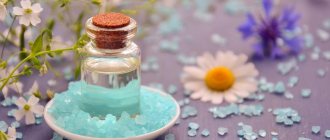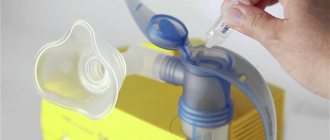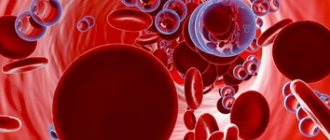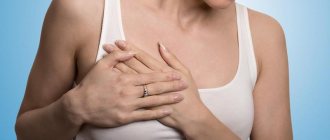- Medicines
- Saline solution
- Essential oils
- Not recommended for use
It is believed that inhalations are more effective than syrups and tablets. During the procedure, the medicinal solution is converted into an aerosol or steam - so the drug directly affects the source of inflammation.
Today we will look at what medicinal and non-medicinal solutions can be used in inhalers.
Medicines
Prescribed individually at a doctor's appointment. As well as other details of treatment - how often to inhale and how much of the drug to pour into the inhaler.
Pulmonologists identify 5 groups of drugs that can be used for inhalation.
- Bronchodilators - relieve bronchospasm and are used in the treatment of bronchial asthma, chronic obstructive pulmonary disease and some other diseases. For example: salbutamol, fenoterol, berodual.
- Non-steroidal anti-inflammatory drugs - reduce pain, fever and inflammation. For example: pulmicort and cromohexal.
- Antibiotics - used to treat bacterial infections. For example: fluimicil.
- Corticosteroids are steroidal anti-inflammatory drugs. For example: hemisuccinate, prednisolone, dexamethasone.
- Mucolytics - thin mucus and facilitate its removal from the lungs. For example: fluimucil, lazolvan, ambroxol, ambrohexal, pulmozyme, acetylcysteine.
Not many medications can be used with steam inhalers and ultrasonic nebulizers: for example, antibiotics and hormonal drugs are destroyed when heated.
If you need a universal option, and you know exactly what to put in your inhaler when you cough, choose compressor and mesh nebulizers - you can use any medications with them.
What is the difference between a nebulizer and an inhaler?
Main differences:
| Inhaler | Nebulizer | ||
| Type | Operating principle | Type | Operating principle |
| Steam | Its action is reminiscent of the “grandmother’s” method of “breathing over a saucepan of hot water.” The advantage is that you can safely use decoctions, oils, and tinctures. The effectiveness is obvious in the treatment of upper respiratory tract diseases. | Compressor | The compressor supplies a powerful air stream through the nebulizer chamber filled with inhalation solution. Due to this, the drug is sprayed. |
| Ultrasonic | High-frequency ultrasound affects the drug. Therefore, the use of antibiotics, mucolytics, etc. is prohibited. | ||
| Mesh nebulizer | The most effective, compact. Characterized by a unique low-frequency atomization. The working element is a membrane with tiny holes, invisible to the eye, through which the inhaled aerosol is “pressed”. There are practically no restrictions on medications: antibiotics, hormonal drugs, herbal decoctions, ether-containing solutions, etc. | ||
Additional differences:
| Inhaler | Nebulizer |
| Steam inhalations should not be performed if the temperature is above 37, as it will rise even more. The patient's condition will worsen. | Mesh nebulizers are so compact that they fit into a handbag and will not cause any inconvenience to its owner. However, they have a rather high price compared to their colleagues of a different principle of operation. |
| High water temperatures reduce the range of medications that can be used. Read the instructions carefully. | Converting liquid medicines into aerosols. |
| Due to the high temperature of the liquid, the concentration of inhaled substances is greatly reduced. | Wide spectrum of action. Due to the particle size and temperature, the aerosol penetrates into the deep parts of the respiratory tract. |
| A steam inhaler is not recommended for small children, as hot steam can burn the mucous membrane of the baby's respiratory tract. | It is strictly forbidden to use herbal decoctions, tinctures in their pure form, or oil solutions. |
| Suitable for the treatment of simple colds and acute respiratory viral infections with a mild course of the disease. | Optimal for newborns. |
| Do not use antibiotics, mucolytics, bronchodilators, or hormonal drugs. | Medicines enter the deep layers in liquid form without irritating the mucous membrane. |
Saline solution
This combination of water and 0.9% sodium chlorine is physiological - the same concentration of sodium chlorine is found in blood plasma. Therefore, saline solution can be poured into the inhaler even for a child.
During inhalation, saline solution relieves irritation and swelling of the mucous membrane and promotes the removal of sputum. It can be made at home from table salt and distilled water.
Borjomi or Essentuki mineral water is considered an analogue of saline solution, but manufacturers do not recommend using them - the composition may contain suspensions that are not physiological.
What is important to know?
- In order not to harm your health or the health of your child, be sure to consult your doctor before inhalation. And carefully read the instructions for the device before using it.
- Strict contraindications to the procedure: temperature above 37.5 degrees, cardiovascular or respiratory failure, and a tendency to nosebleeds.
- Inhalations are carried out through the nose or mouth, depending on the disease.
- Before using medications, check their expiration dates.
- Do not dilute nebulizer medication with water - it is not sterile.
- Inhalations should be carried out no earlier than 1.5 hours after eating. Refrain from eating, drinking, or talking for another hour after the procedure.
- During inhalation, it is recommended to hold your breath for 1-2 seconds before exhaling.
- For 3-4 hours after the procedure, do not go outside or breathe cold air.
- After use, be sure to clean the device according to the instructions.
Essential oils
Useful for the prevention of ARVI and influenza. Essential oils can only be poured into steam inhalers - for the prevention and treatment of the upper respiratory tract.
When oils enter the lower respiratory tract, they clog the bronchi, so they are prohibited from being used in nebulizers.
Solutions for nebulizers
Bronchodilators
Berodual: The active ingredients fenoterol and ipratropium bromide eliminate the phenomenon of suffocation in chronic obstructive respiratory diseases. The drug is highly effective, but its use is possible only after consultation with a doctor. The dosage is selected individually, taking into account the severity of the attacks.
For one inhalation for adults and children over 12 years of age, the dose varies from 1 ml (20 drops) to 2.5 ml (50 drops).
For children under 6 years of age, 0.1 ml (2 drops) per 1 kg of body weight, no more than 0.5 ml (10 drops) subject to medical supervision. It is necessary to add 0.9% sodium chloride solution to the recommended dose to a final volume of 3-4 ml.
Berotek: Prescribed for the prevention and relief of attacks of bronchial asthma and chronic obstructive pulmonary disease. For adults and adolescents over 12 years old – 10 drops, up to 4 times a day.
Children under 6 years of age (body weight less than 22 kg) – 50 mcg/kg (=0.05 ml or 1 drop per kg of body weight), but not more than 0.5 ml (10 drops per dose) up to 3 times a day . Dilute with 0.9% sodium chloride solution to a final volume of 3-4 ml.
In severe cases – 1 ml (1000 mcg fenoterol – 20 drops); 6–12 years (body weight 22–36 kg) – 0.25-0.5 ml (0.25-0.5 mg – 5-10 drops), in severe cases – 1 ml (1000 mcg fenoterol – 20 drops ). The active ingredient fenoterol (0.1% solution for inhalation) eliminates attacks of bronchial asthma.
Salgim, Ventolin Nebula: The drug is used without the addition of saline solution. The active ingredient salbutamol (0.1% solution for inhalation) eliminates asthma attacks and is used for the prevention and treatment of bronchial asthma and chronic obstructive pulmonary disease.
For one inhalation for adults and children, 2.5 ml (2.5 mg) is required, apply at intervals of 4-6 hours.
Atrovent: The active substance is ipratropium bromide (0.025% solution for inhalation), eliminates asthma attacks, is suitable for the prevention and symptomatic treatment of bronchial asthma and chronic obstructive pulmonary disease.
The drug has side effects and contraindications. Use strictly in the dosage prescribed by your doctor.
For one inhalation for adults and children over 12 years of age, 0.5 mg (40 drops) is required, 3-4 procedures per day; 6–12 years – 0.25 mg (20 drops), 3–4 times a day; up to 6 years – 0.1–0.25 mg (8-20 drops), 3–4 times a day (under medical supervision). Dilute with saline to a volume of 3–4 ml.
Thinners and expectorants
Fluimucil, ACC Inject: Active ingredient acetylcysteine (10% solution for injection). For inhalation, use a 10% solution (to obtain a 10% solution, an ampoule with a 20% solution is diluted with water for injection in a 1:1 ratio). Used to treat problems with mucus discharge from the lower respiratory tract. Facilitates the removal of mucus from the upper respiratory tract.
One inhalation for adults and children over 12 years of age requires 3 ml of a 10% solution, 1-2 times a day; from 6 to 12 years – 2 ml, 1-2 times a day; from 2 to 6 years – 1-2 ml, 1-2 times a day; Diluted 1:1. Duration of treatment is 5-10 days.
Taking antibiotics is only possible with an interval of at least two hours between doses. If it is necessary to simultaneously administer acetylcysteine and an antibiotic, use Fluimucil-antibiotic, or use mucolytic drugs compatible with antibiotics, for example ambroxol.
Lazolvan, Ambrobene: The active ingredient ambroxol (solution for inhalation and oral administration) perfectly treats acute and chronic diseases of the respiratory tract with the release of high-viscosity sputum. Ambroxol-based drugs are not recommended for use with antitussive drugs, such as codeine, libexin, falimint, broncholitin, pectussin, sinekod, etc. When using ambroxol drugs, good absorption of antibiotics is observed.
One inhalation for adults and children over 6 years of age requires 2-3 ml of solution, 1-2 times a day; from 2 to 6 years – 2 ml of solution, 1-2 times a day; up to 2 years – 1 ml of solution, 1-2 times a day. Dilute with saline solution in a 1:1 ratio. The course of treatment is no more than 5 days.
Narzan, Borjomi: For 1 inhalation – 3-4 ml of mineral water, 2-4 times a day. Before inhalation, degas the water. Used to moisturize the mucous membrane of the respiratory tract.
Glucocorticosteroids and Antihistamines
Pulmicort: Active ingredient budesonide (suspension for inhalation, available in “child” (0.25 mg/ml) and “adult” (0.5 mg/ml) dosages). Prescribed for bronchial asthma, chronic lung disease, acute inflammatory diseases requiring treatment with hormonal drugs. Has anti-inflammatory and antiallergic properties.
For 1 inhalation for adults/elderly and children over 12 years of age, 1 mg is required, 1-3 times a day; Children from 6 months. and up to 12 years, 0.25 mg, 1-3 times a day.
Note: This drug is not used in home nebulizers.
Antimicrobial and antibacterial drugs (Antibiotics and Antiseptics)
Fluimucil antibiotic: Active ingredients acetylcysteine and thiamphenicol (powder for injection and inhalation complete with solvent). At the same time, an antibiotic and a thinning and expectorant drug are administered.
For 1 inhalation, adults and children over 12 years old – 250 mg, 1-2 times a day; up to 12 years – 125 mg, 1-2 times a day. The recommended dose of the drug is diluted with 2 ml of saline solution.
To prepare the drug, add 5 ml of solvent (1 ampoule) to the bottle with the powder. Do not store the resulting preparation for more than a day; warm it to room temperature before use.
How to fill a nebulizer with saline solution
A universal remedy used for various diseases of the respiratory system. Beneficial properties of sodium chloride:
- moisturizes the mucous membrane;
- stimulates normal mucus formation;
- improves breathing;
- facilitates expectoration of sputum;
- destroys pathogens;
- helps relieve the inflammatory process;
- enhances the properties of administered drugs.
How to fill an inhaler with saline solution:
- prepare the apparatus;
- draw 4 ml of saline solution with a syringe;
- pour into the camera of the device;
- turn on the device;
- breathe for 10-20 minutes.
Saline solution for inhalation is sold in dosed containers. However, you can buy a 200 ml bottle. In this case, do not open the bottle completely, but draw the product with a syringe and needle. Puncture the rubber stopper and take out the required amount of the drug. After inhalation, the remaining product is poured out. Each procedure requires a new portion. The solution should be stored in a cool place for no longer than 1 month.
How to refill an inhaler when a child coughs
Young children often get sick due to weak immunity. Almost every cold ends in bronchitis, tracheitis, pneumonia. Nebulizer therapy helps cope with the disease and reduces the likelihood of developing side effects from medications. The dosage of drugs is selected individually. Depends on the clinical picture and age.
What to breathe for your child:
| Moist cough | Bronchitis with obstruction | Laryngotracheitis with frequent, severe attacks | Dry cough |
| Saline solution | |||
| Lazolvan, Ambroxol, Mukolvan | |||
| Ventolin, Salgim, Berotek | |||
| Pulmicort, Budesonide, Cromohexal | |||
| Fluimicil-Antibiotic | |||
Before starting treatment, you should consult your pediatrician. You are allowed to use saline solution yourself. If the cough is well expectorated, breathing is not difficult, nebulizer therapy is not prescribed.
How to and how not to be treated with a nebulizer
What is a nebulizer?
This is a device that appeared on the market relatively recently; it serves to cleanse the lungs and treat various diseases associated with the respiratory system. Creates a fine aerosol from a liquid (very small droplets suspended in the air). The person then inhales it through a tube or mask.
What does the name "nebulizer" mean?
The term "nebulizer" comes from the Latin word nebula - fog, cloud.
Does a “healthy” person need a nebulizer?
In many cases - yes! After all, it helps cleanse the respiratory system.
Many seemingly healthy residents of cities and towns are forced to “cleanse themselves” for three or four minutes every morning—clear their throats in the bathroom or—excuse me—blow their nose. And all this is precisely because, figuratively speaking, our airways are clogged due to poor ecology. Moreover, this should be done not only by those who lead a sedentary lifestyle. People who lead a healthy lifestyle sometimes suffer from poor ecology and air pollution even more than those who are not used to bothering themselves with physical exercise! After all, when jogging, cycling, skiing, and in general during any active sports in the city or near the city - in “sort of fresh air” - we push gigantic volumes of not very clean air through our lungs. So, on the one hand, rapid “sports” breathing is beneficial for the lungs and heart - and on the other hand, with such breathing, we, figuratively speaking, more actively “pump” harmful substances into the lungs. Learn more about how to cleanse your lungs, including using a nebulizer.
In addition, even the healthiest person sometimes gets respiratory tract infections. Doctors have repeatedly suggested that you take antibiotics to fight a bacterial infection. In tablets or injections. As you understand, almost all antibiotics have a systemic effect on the body and cause side effects. And the higher the dose of antibiotic, the more serious the various adverse reactions. So, if you supply antibiotics through a nebulizer, then it will flow directly to its destination - into the bronchi and lungs. This means that a smaller dose of antibiotic will be required, and the side effects for the whole body will also be less. By the way, antibiotics through a nebulizer can be used not only for bronchitis and pneumonia, but also for tracheitis, otitis media, sinusitis and sinusitis. It is especially good to use this therapy for treating children, because the procedure is absolutely safe and painless, and the 5–10 that it takes, let the child watch cartoons, this is much better than nasty pills or unpleasant injections.
What medications and for what diseases can be used with a nebulizer?
Nebulizer therapy uses:
- drugs for thinning sputum and improving expectoration (acute and chronic bronchitis; pneumonia; COPD; bronchial asthma with difficulty in sputum discharge) - Ambrohexal, Ambroxol, Lazolvan, Ambrobene, Fluimucil, Acetylcysteine
- drugs that dilate the bronchi, relieve bronchospasm (COPD; bronchitis, including obstructive; bronchial asthma (endogenous, allergic); some types of pneumonia; laryngitis.) - Berodual, Ventolin, Berotek, Salbutamol, Salamol
- hormonal drugs with multifaceted effects, primarily anti-inflammatory and anti-edematous (bronchial asthma requiring maintenance therapy with corticosteroids; COPD) - Budesonit, Pulmicort, Budenit
- antiallergic drugs (hay fever, allergic rhinitis, including seasonal and/or year-round) - Cromohexal
- antibiotics for the destruction of bacteria that cause diseases and associated infections (bronchitis, tracheitis, pneumonia, catarrhal and purulent otitis, sinusitis, sinusitis) - antibiotic prescribed by a doctor + Fluimucil
- slightly alkaline and saline solutions to moisturize the mucous membranes in order to speed up the process of mucus removal: saline solution, soda-buffer solution.
We remind you that all medications, especially antibiotics, hormonal and systemic drugs, can only be used as prescribed by a doctor . Their administration using a nebulizer should also be discussed with your doctor . By the way, if you are planning to purchase or already have a nebulizer, inform your doctor about this. Although for many doctors, of course, it is easier to prescribe you pills, injections or droppers than to select nebulizer therapy, since this requires additional effort and higher qualifications.
What else do you need to know about nebulizers?
Be sure to carefully read the instructions for the device and the medicine, and strictly follow the doctor’s instructions. It should be taken into account that some medications should be diluted in saline, some in distilled water, and some should not be diluted. It is important to remember that solutions that can be used with a nebulizer are usually labeled “for inhalation”, and there is also a special ready-made form of such solutions - “nebula” packaging.
Some medications cannot be used in ultrasonic nebulizers.
You should also know that when simultaneously prescribing several types of drugs for nebulizer inhalation, it is necessary to adhere to a certain sequence of administration of the drugs. Bronchodilators should be inhaled first, followed by mucolytics. And after this, anti-inflammatory and antiseptic agents can be administered.
The medicine must be at room temperature!
To minimize the risk of side effects, rinse your mouth thoroughly with water after each inhalation of medications.
Try to keep the aerosol cloud out of your eyes.
To prevent skin irritation, your face should be washed after using the nebulizer with a mask.
How not to be treated with a nebulizer?
Please do not experiment with medications!
There is a widespread false claim on the Internet about the usefulness of using herbal decoctions and tinctures during nebulizer therapy (for example, for the prevention of acute respiratory infections). The use of essential oils, decoctions and infusions of medicinal herbs in nebulizers is unacceptable without a direct prescription from a doctor! The fact is that such liquids contain microscopic particles of plants, tannins, polysaccharides and other components, so if they get into the lungs and bronchi, acute allergic reactions, pulmonary spasms, bronchospasm, severe coughing and other troubles are possible. Essential oils can also cause damage to both the device and your lungs. It is better to use such products as part of aromatherapy (evaporate on a cushion of water through aroma lamps), or inhale through ordinary glass or steam inhalers, following the instructions for use.
If we talk about the real dangers that can result from improper use of a nebulizer, then you must remember to disinfect the nebulizer, hoses, and masks before the first and after each repeated use. Imagine what you will breathe through a nebulizer if mold grows in the unwashed and undried nebulizer or the remains of the medicine disintegrate into unknown components. Therefore, what is possible according to the instructions - we boil, what is not - we wash and disinfect, for example, with chlorhexidine, then dry it. It is best for each family member to use their own set of accessories (mask, mouthpiece), since they are inexpensive. We must not forget about timely change of filters; most often they are included with the device.
And be sure to consult your doctor about possible contraindications: these may include pregnancy, some pulmonary diseases, etc.
Do not pour any herbal decoctions, tinctures, solutions containing suspended particles, oils, mineral water, etc. into the nebulizer container! Only medicine or saline solution approved by your doctor! Otherwise, you can damage the device and harm your health!
Can mineral water be used in nebulizers?
The use of mineral water in nebulizers causes a lot of controversy. The opinions of medical specialists are diametrically opposed.
The Internet is full of implausible and carbon-copy “horror stories” on this topic. Moreover, the persistence with which such strange stories are spread on various forums is quite surprising.
At first glance, there is nothing dangerous in mineral water. We swim in the sea, breathe sea air, and sea water is much more saturated with salts than ordinary mineral water. But let’s still agree that until real research on this topic appears, we will refrain from drinking mineral water for inhalation through a nebulizer!
The composition of mineral water is extremely unstable, it is unsterile. Moreover, mineral water is often counterfeited. Therefore, if your doctor still prescribed mineral water for inhalation, you should only buy it at a pharmacy and check that it has a neutral or slightly alkaline reaction.
What advantages does a nebulizer have over traditional inhalers?
use of drugs in minimal effective doses. Reducing the doses of drugs entering the body is especially important for potent and hormonal drugs; a smaller dose means fewer side effects. continuous supply of small doses of medication during the session, in contrast to a single, but loading dose in inhaler sprays, is much more effective. allows, in contrast to metered-dose aerosol inhalers, to administer pure medications to all respiratory organs (nose, bronchi, lungs), without any impurities (solvents or carrier gases), which also reduces the load on the lungs and reduces the likelihood of side effects. can be used at any age, since the patient is not required to perform any conscious actions, for example, pressing the inhaler canister while inhaling, which is especially important in young children. there is no need to take a strong breath - it is important in cases of a severe attack of bronchial asthma, as well as in bedridden patients, patients in childhood, the elderly or with developmental disabilities.
Who simply needs a nebulizer to significantly improve the quality of treatment, and in many cases, the quality of life?
- patients with chronic or often recurrent bronchopulmonary diseases (bronchial asthma, COPD, chronic bronchitis, cystic fibrosis), for the complex treatment of cough with difficult to separate sputum.
- families with a child who is susceptible to frequent colds and bronchitis
- people with occupational diseases of a bronchopulmonary nature.
To whom do we highly recommend nebulizer prevention of respiratory diseases?
- smokers, including former
- athletes
- those who need to talk often and a lot (teachers, lecturers, telephone operators) or have contact with people (at work, in transport, in public places)
- elderly people
- residents of large/industrial cities
- for lovers of healthy lifestyle, spa, cleansing procedures
Can a nebulizer be used to treat children?
If prescribed by a doctor, nebulizers can be used to treat children from a very early age. Moreover, many manufacturers have special children's models made in the form of toys (B.Well PRO-115). “Children’s” models of nebulizers are equipped with special children’s and infant masks, they are less noisy, and they have inhalation speed control (B.Well MED-125).
Can a runny nose be treated with a nebulizer?
It’s possible, some nebulizer models are even equipped with special nasal attachments (for example, B.Well PRO-110).
An important condition is that nebulizer therapy is suitable for treating runny nose only of a non-infectious nature.
Exclusive information: inhalations with saline help in the treatment of atrophic rhinitis (in approximately 70% of cases).
What is the nebulizer fraction?
A very important characteristic of any nebulizer is the indicators of the nebulizer (respirable) fraction. Despite the fact that outwardly it seems that steam is coming out of the nebulizer, you need to understand that this is not steam, but an aerosol consisting of small particles of a sprayed substance. The size of these particles directly affects which part of the respiratory tract they settle in. The smallest particles are able to penetrate as deeply as possible into the lower respiratory tract (lungs and bronchi), while larger particles will settle in the upper respiratory tract (mouth, nasopharynx, throat and trachea). The best therapeutic effect is provided by particles from 2 to 5 microns (this is the so-called nebulizer fraction). This characteristic is especially important if the nebulizer is used to treat bronchial asthma or COPD. A high content of particles of the correct size is the main difference between a high-quality nebulizer. For example, b.well nebulizers ensure that the atomized aerosol contains more than 70% particles of the correct size (about 3 microns), and this is comparable to professional, hospital models. In low-quality devices, it can be much lower than 50%, i.e., in fact, more than 50% of the medicine is simply thrown away. In this case, what is important, of course, is not so much the financial losses, but the fact that with low-quality nebulizers the effectiveness and meaning of treatment are lost.
Article by Dr. Evdokimenko © August 30, 2021 All rights reserved.
Reviews
Veronica: “The child has a cold. My nose was very stuffy. The discharge was clear. Vasoconstrictor drops did not help at all. There was no cough. In the evening I decided to give Pulmicort to ease my breathing and relieve swelling. At first it became better, the next morning there was heavy breathing, whistling, and coughing sometimes. We went to the doctor - bronchitis. I prescribed to breathe Mukolvan, Lorde. After two days it became easier. I have two conclusions: you shouldn’t self-medicate; inhalations can make things worse. I am sure that it was from the nebulizer that the infection descended into the bronchi.”
Carolina: “My son had laryngotracheitis. In the evening I coughed so much that I could not calm down. We breathed Ventolin and Pulmicort. No sense. I let my legs soar and lit a lamp with essential oils. It got better in 5 minutes. My point is that compressor devices help where they are used correctly.”
Nadezhda: “I got over it, but a week later I feel my throat starting to hurt again. There is a compressor in the house, but I haven’t used it myself. I decided to breathe in Dekasan. They say it kills bacteria and viruses. First, I inhaled the medicine through a mask through my nose. Then she inserted the mouthpiece into her mouth. The whole procedure lasted about 40 minutes. In the morning, my throat no longer hurt. Maybe it’s a coincidence, but I think the procedure helped.”








